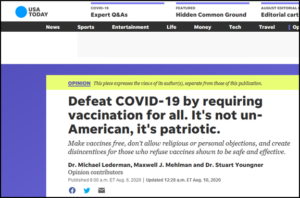Where everybody knows everybody else’s name

Do your patients consider your practice so cool that they want to hang out with you more?
Do they come in early just to soak in the vibes and chat with other patients?
Do you have a practice club?
There are sizable benefits to creating and sustaining your own practice community. The fact is you probably loosely have one already. It is a rich resource that, if better organized and cultivated, can improve patient retention and referrals.
People want to be part of something larger than themselves. This includes belonging to a group whose values they share. Edward Deci, Ph.D., says it is an intrinsic, innate motivation we all have.
A practice club, or organized community relations program, strengthens your connection with each patient. But in addition, it builds relationships between your patients and even non-patients who are supportive of your practice.
I grew up in a small farm town. We had a very busy barbershop. It was always full of men, smoking cigarettes and talking to the barbers – and each other – about the comings and goings of our small town. I think my dad dropped in at least every other day. The barbershop had created its own interactive and slightly exclusive club.
As a more organized example, the motorcycle company Harley-Davidson established the Harley Owners Group, nicknamed HOG. You must own a Harley motorcycle to belong, and then you are eligible to attend many events the company sponsors and receive discounts on all its products. I know a few HOG members, and they are loyal to the brand and share a bond with each other. And they are active, servicing their bikes and using Harley products.
Organizing Your Community
You can sponsor your own “rallies” and probably have. Patients attend, see you and your staff outside the office, and get a chance to talk. But even more, they can connect with other patients. This is how your practice network strengthens.
You can better organize your community by delegating someone to be your Community Services Coordinator for a few hours every month. They would plan and implement various events, with everyone on staff would participating.
In addition, they could start an online club, such as a private Facebook Group. Your patients would be invited to join, as well as local businesses who share your values.
In my experience, most community-building efforts rarely amount to much because there is no one in charge to keep the group energized. Events are “one and done,” with little follow-up. This contributes to the Practice Roller Coaster effect. They do work at generating referrals and improving retention, for a while, but the energy created ebbs away.
Authentic newsletters, events, phone calls, a social media group, success stories, and special bonuses help keep the community humming along.
Network Effects
Network Effects is an economic term. It simply means that the more people use a company’s product or service, the more valuable it becomes. The larger your network becomes, the better the service improves. And the better your services improve, the larger your network becomes.
It is momentum related. Think of a flywheel or pushing a car with a dead battery. (ugh). Once you get it going, the going gets easier.
From my favorite HOG advertisement:
“It’s a free country. Live like it.
Screw it, let’s ride.”
And also,
Seize your future,
Ed
Want to improve your community building? Schedule a call and we can look at options. To schedule, go here.

In the Sierra’s




